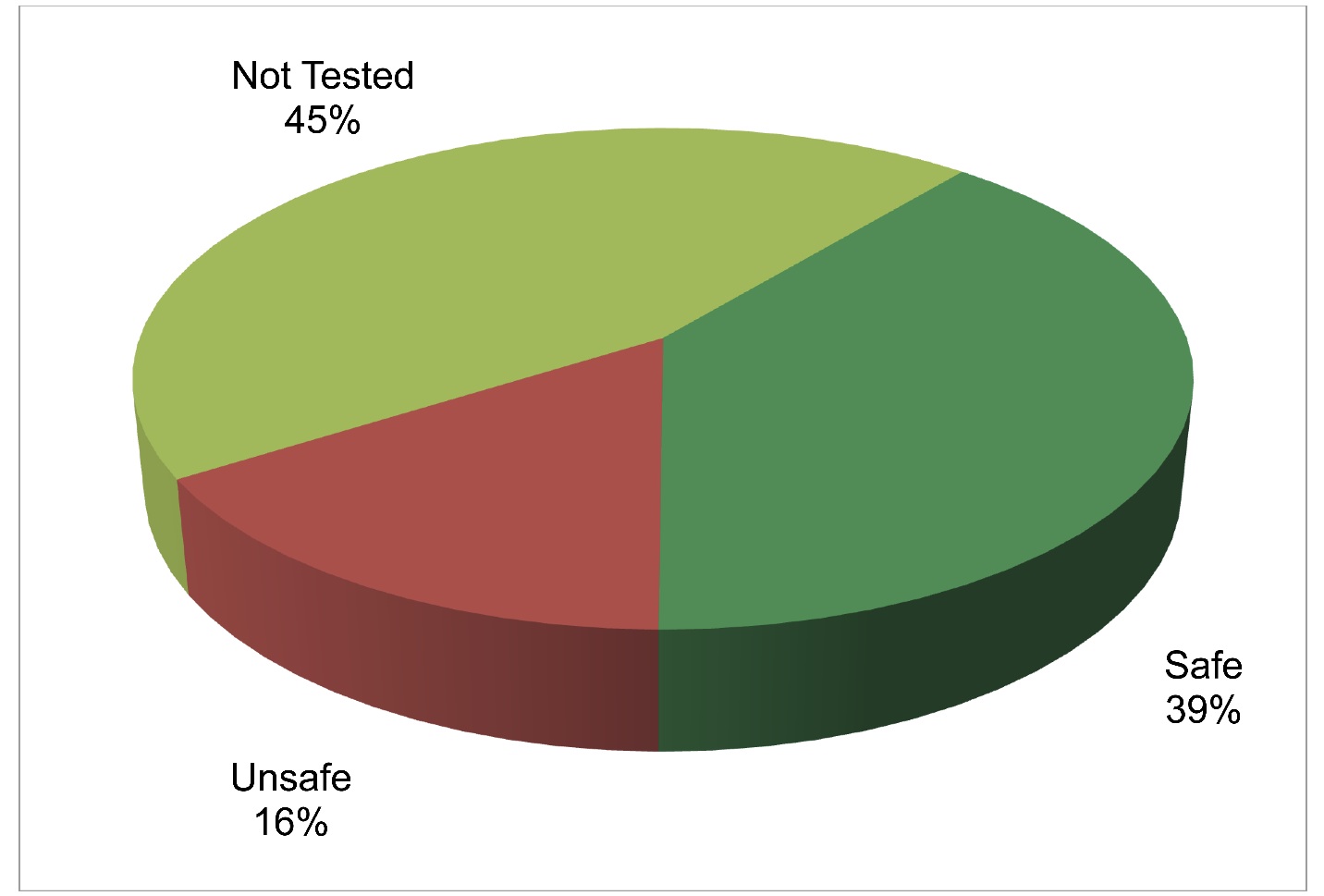| |
Exposure to arsenic through groundwater has been a major public health problem in the USA, Taiwan, Mexico, Mongolia, Argentina, India, Chile, and Bangladesh.1 More than 100 million people worldwide have been estimated to be chronically exposed to arsenic from drinking water containing high arsenic levels. The situation is devastating in Bangladesh that can easily be reflected via the number of affected people. Among the countries’ 7-11 million hand pumped tube-wells, approximately half have been estimated to supply groundwater with an arsenic concentration more than 50 microgram/L, which is the maximum level of arsenic allowed in drinking water.2 People in Bangladesh become terror-stricken when they come to know that underground water in parts of the country is strained by deadly arsenic. The permissible level of arsenic in water is 50 ppb (Parts per billion) according to experts. But according to the Bangladesh Atomic Energy Commission, the level of arsenic is between 150 and 200 ppb in tube-well water in the districts boarding West Bengal. It is estimated that nearly 80 million people of the country are affected by arsenic and one in ten has the probability of developing cancer from the poisoning.3

Figure 1: Safety profile of the tube-wells supplying groundwater to the community.
In Bangladesh, arsenic contamination in groundwater was first detected in the year 1993. According to the data provided by UNICEF in 2008, there are approximately 8.6 million tube-wells in Bangladesh. Of these, 4.75 million tube wells (55%) have been tested for arsenic among which 3.3 million (39%) were marked green indicating that the ground water is safe; while 1.4 million (16%) were marked red indicating that they are unsafe to use as sources of drinking water due to the high arsenic level, (Fig. 1). Recent findings show that about 20 million people in Bangladesh are using tube-wells contaminated with arsenic over the permissible level (>50 ppb).4
Chronic arsenic exposure is associated with many human health conditions, including skin lesions and cancers of the liver, lung, bladder and skin. It is also associated with many non-cancer health conditions, such as adverse reproductive outcomes, neurological disorders and impaired cognitive development in children. Cardiovascular effects in human drinking arsenic-contaminated water include black foot disease, atherosclerosis, cerebrovascular diseases and ischemic heart disease. Moreover, maternal arsenic exposure via drinking water is associated with fetal loss, small size at birth, infant morbidity and mortality.
The overall situation indicates that Bangladesh is in the highest risk of an epidemic of arsenic poisoning and arsenic related diseases. Arsenic affected people suffer from enormous social stigma here as people consider it as a contagious disease or a curse. It is a matter of great pleasure that nowadays the awareness about arsenic poisoning has improved significantly. Many international organizations such as WHO, UNICEF and national NGOs are working on this issue. We can hope in the near future that Bangladesh will be successful to overcome the terrorism of arsenic if awareness programs can be continued.
Acknowledgements
The authors reported no conflict of interest and no funding was received for this work.
|
|
| |
1. Argos M, Kalra T, Rathouz PJ, Chen Y, Pierce B, Parvez F, et al. Arsenic exposure from drinking water, and all-cause and chronic-disease mortalities in Bangladesh (HEALS): a prospective cohort study. Lancet 2010 Jul;376(9737):252-258.
2. Smith AH, Lingas EO, Rahman M. Contamination of drinking-water by arsenic in Bangladesh: a public health emergency. Bull World Health Organ 2000;78(9):1093-1103.
3. Uddin SJ, Shilpi JA, Murshid GM, Rahman AA, Sarder MM, Alam MA. Determination of the binding site of arsenic on bovine serum albumin using warfarin (site-I specific probe) and diazepam (site-II specific probe). J Biol Sci 2004;4(5):609-612 .
4. UNICEF. Arsenic Mitigation in Bangladesh. 2008 available at http://www.unicef.org/bangladesh/Arsenic.pdf [Accessed on December 6, 2010].
|
|